Cellular Respiration
Objective 5.4
5.4.1 Identify the steps of cellular respiration, the primary players (molecules), where each player fits in the overall process, and where in the cell each step occurs.
Cellular respiration begins with a single glucose molecule (C6H12O6). If oxygen (6 O2) is present, it ends with the production of 26–38 ATP molecules (as well as 6 CO2 and 6 H2O molecules as byproducts).
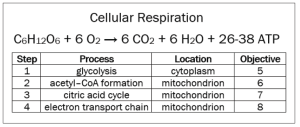
The process is actually four separate sets of reactions that occur one after the other: 1) glycolysis (takes place in the cytoplasm), 2) acetyl coenzyme A formation (in the mitochondria), 3) the citric acid cycle (in the mitochondria), and 4) the electron transport chain (also in the mitochondria).
Meet the Molecules
Glucose – The starting material for cellular energy production is glucose. Glycolysis breaks glucose into two smaller molecules in the cytoplasm.
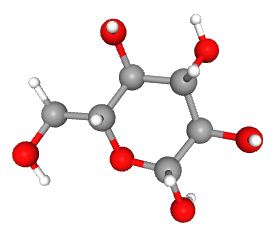
ATP – The ultimate product of cellular respiration is adenosine triphosphate (ATP), the energy currency of the cell. It stores energy in the high-energy bonds between its three phosphate (-PO4) groups.
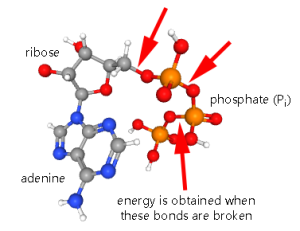
Pyruvic Acid – Pyruvic acid (pyruvate), an important intermediate in metabolism, is a 3-carbon sugar. Lactic acid (lactate) is also a 3-carbon molecule. Lactate can be catalyzed back to pyruvate by lactate dehyrogenase…which can then be used for fuel, allowing for aerobic metabolism in the presence of oxygen.
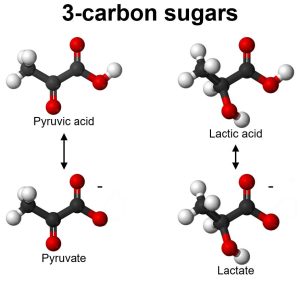
Coenzyme A – Coenzyme A (CoA) is like a “shovel” that picks up a 2-carbon molecule and deposits it in the citric acid cycle. The 2-carbon molecule carried by the CoA shovel is an acetyl group (acetate). When CoA is carrying an acetyl group, the combined structure is called acetyl coenzyme A (acetyl-CoA).
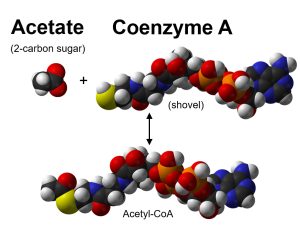
FAD and NAD+ – The remaining two players, FAD and NAD+, are like “buckets” that carry protons (H+) and electrons (e–). The protons and electrons are removed from carbons during glycolysis, acetyl coenzyme A formation, and the citric acid cycle, and carried by FAD and NAD+ to the electron transport chain. Once “loaded” with protons and electrons, FAD becomes FADH2 and NAD+ becomes NADH + H+.
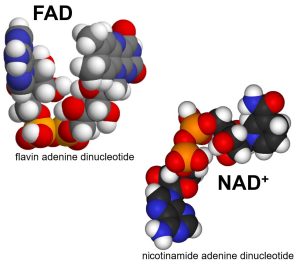
The steps and primary players fit together as shown here:
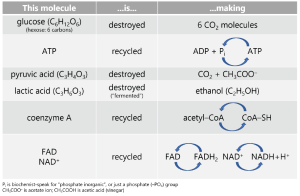
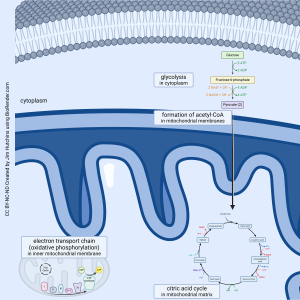
Media Attributions
- U05-008 overview of cellular respiration with objectives © Hutchins, Jim is licensed under a Public Domain license
- U05-009 D-Glucose_Conformer3D_large (2) © Hutchins, Jim is licensed under a Public Domain license
- U05-010 Adenosine-Triphosphate_Conformer3D_large © Hutchins, Jim is licensed under a Public Domain license
- U05-011 3 carbon sugars © Benjah-bmm27 and Jynto adapted by Brad Winterton is licensed under a Public Domain license
- U05-012 Acetate Coenzyme A New © Benjah-bmm27 is licensed under a Public Domain license
- U05-013 FAD NAD © Lanulos and Benjah-bmm27 adapted by Jim Hutchins is licensed under a Public Domain license
- U05-014 table of who is destroyed and who is recycled © Hutchins, Jim is licensed under a Public Domain license
- U05-015 mitochondrial organization © Hutchins, Jim is licensed under a CC BY-NC-ND (Attribution NonCommercial NoDerivatives) license

